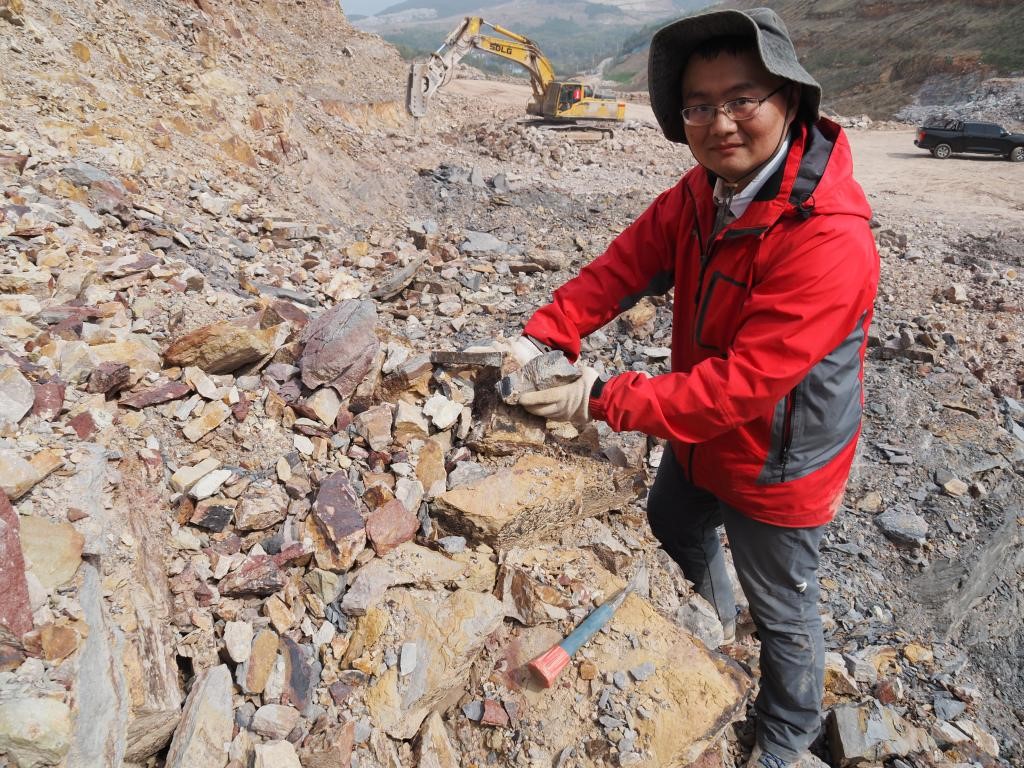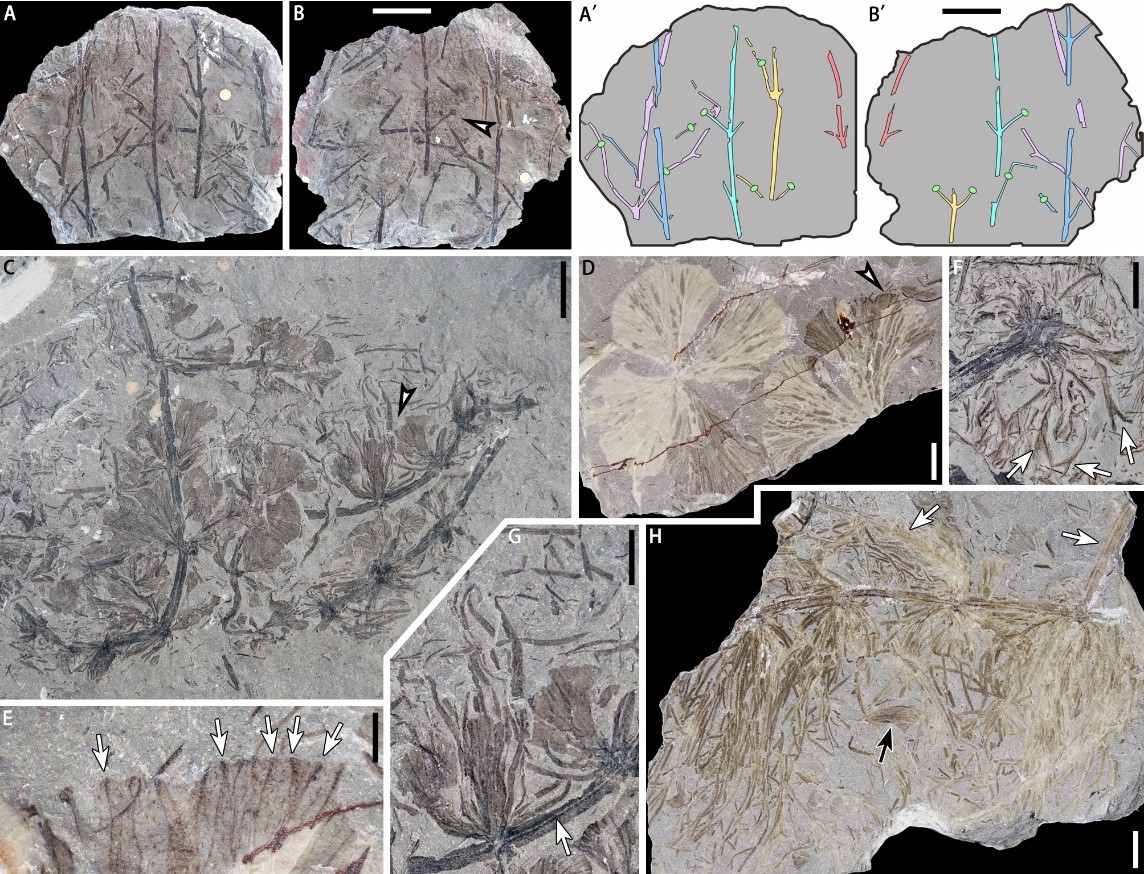

Recently, a significant discovery in the field of paleobotany has garnered attention from the academic community and been widely reported by media outlets such as China News. Associate Professor Liu Le from China University of Mining and Technology-Beijing, along with scholars from Peking University, Sun Yat-sen University, and other institutions, discovered that lycophytes had already evolved an emerged lifestyle in a strata dating back to the Late Devonian period, about 370 million years ago. This finding pushes back the origin of the emerged habit in such plants by approximately 100 million years. Their research paper has been published in the international academic journalCurrent Biology.
In this study, the team thoroughly analyzed over a hundred specimens ofTrisporangiumfossils found in the Late Devonian strata of Anhui Province. These well-preserved specimens include upright stems, slender branches, leaves, stolons, and roots, providing abundant and crucial material for the research.
Liu Le, the first author of the paper, explained that emerged plants have their lower parts submerged in water, with the upper stems and leaves extending above the water surface. Although land plants originated from aquatic algae, some re-adapted to aquatic environments during evolution and became aquatic plants. Through in-depth study of theTrisporangiumfossils, the team revealed their emerged lifestyle, providing valuable direct evidence for the return of land plants to aquatic environments.
The research results show thatTrisporangiumpossesses typical characteristics of emerged plants. The lower parts of the plant developed fine, filamentous aquatic roots adapted to the aquatic environment, while the upper parts stood upright above the water surface to unfurl leaves for photosynthesis. This growth strategy of "half in the water" represents a crucial ecological adaptation. Moreover,Trisporangiumexhibited obvious morphological and functional differentiation in different parts of the plant body, which is rare among early vascular plants and demonstrates their ability to spatially differentiate and adapt to aquatic environments. Additionally, its slender stems and branches, lacking mechanical tissue, may have relied on buoyancy and support from neighboring plants to maintain uprightness, while "water pores" developed on the leaf margins aided in water excretion and regulation, all reflecting its adaptability to long-term or periodic flooding environments.
Trisporangiumadvances the fossil record of the emerged habit in lycophytes by about 100 million years, indicating that the adaptive evolution of land plants "returning to water" began in an earlier geological period.
This discovery not only provides an important basis for the academic community to study plant evolution but also draws more attention to the mysteries of Earth's life evolution hidden behind ancient plants, inspiring more scientific researchers to devote themselves to paleobotany and further explore the history of Earth's life evolution.